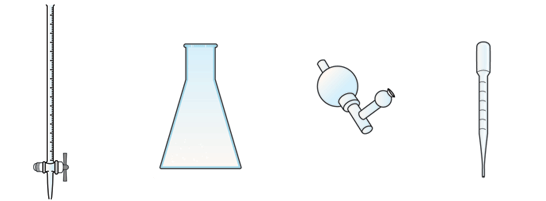How To Carry Out Titration (NECO, WAEC Chemistry Practical)
Here is how to carry out Titration (Volumetric Analysis) during NECO and WAEC Chemistry Practicals.
Titration, also known as titrimetry, is a common laboratory method of quantitative chemical analysis that is used to determine the unknown concentration of an identified analyte (WikiPedia). You can watch the procedure for carrying out the Volumetric analysis from the videos below.
Steps of titration
A titration is carried out using a number of steps:
- If the sample is a solid, it is weighed using an accurate balance, and then dissolved to make up a known volume of solution (usually 100cm3).
- A pipette is used to measure accurately a volume of this solution – for example, 10cm3. A safety pipette filler is used to draw solution into the pipette. This is emptied into a conical flask.
- A few drops of an indicator may be added to the conical flask. This will show a change of colour when the titration is complete.
- A second chemical is placed in a burette. This other solution is of a chemical that will react with the synthesised chemical sample in the conical flask. Often the solution in the burette is an acid or alkali, and it must be of a precise, known concentration.
- The solution from the burette is run into the conical flask. The solution is added one drop at a time, with swirling to mix the solutions as the end-point is approached. Eventually, a colour change shows that the correct amount has been added to react completely with the synthesised chemical in the sample.
- The volume of solution added from the burette is noted. The titration results can then be used to calculate the amount of the synthesised chemical in the sample, and therefore find its purity. (Source: BBC.co.uk)
 Apparatus required for titration (from left to right): burette, conical flask, safety pipette filler and pipette.
Apparatus required for titration (from left to right): burette, conical flask, safety pipette filler and pipette.
You can get calculations from equations derived from your specimens.
Titration tutorial videos (Chemistry Practical Volumetric Analysis)
You can also read more about this topic with examples and calculation by going to this page.
You should check the NECO chemistry practical specimens here too.
We wish you the very best!!!